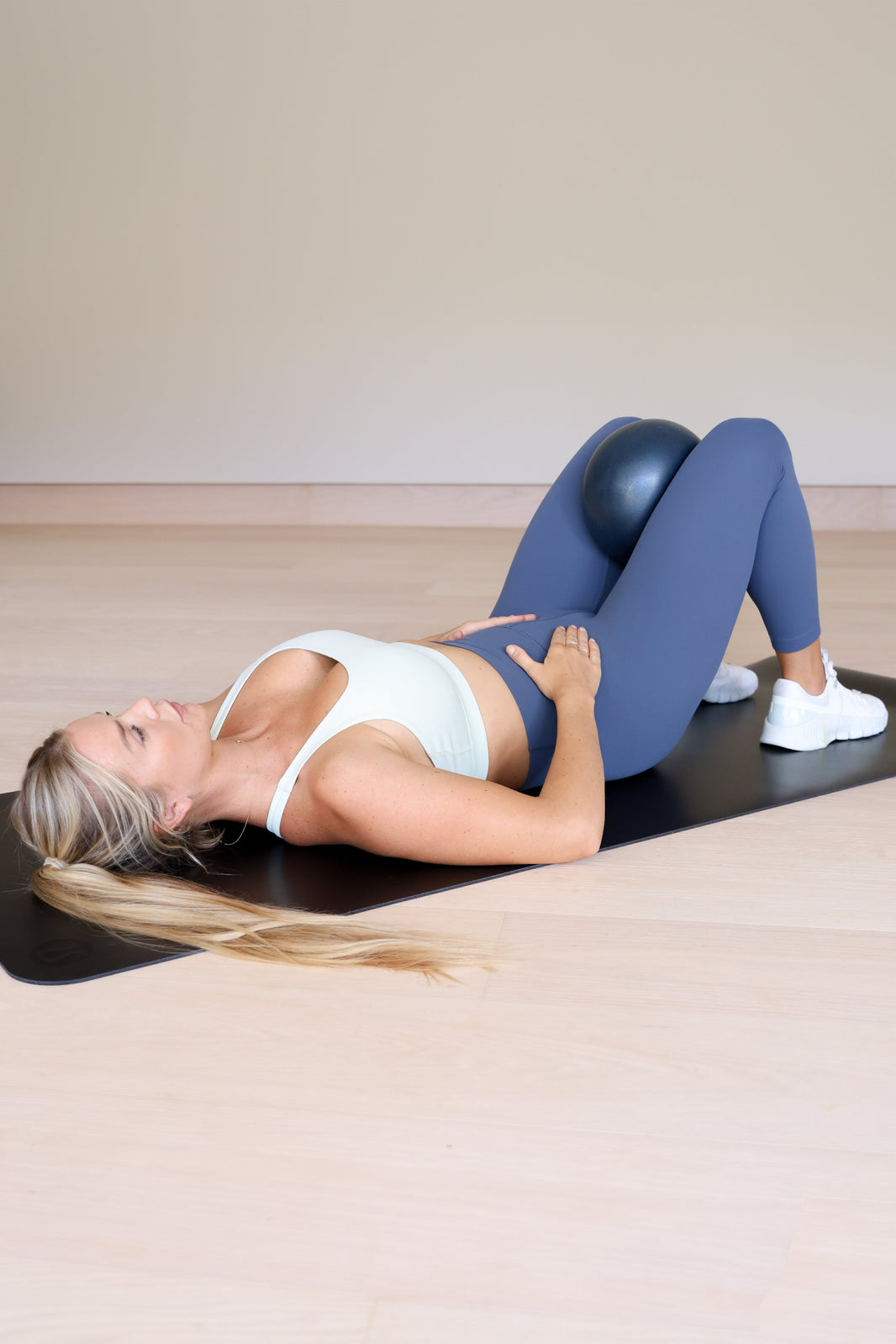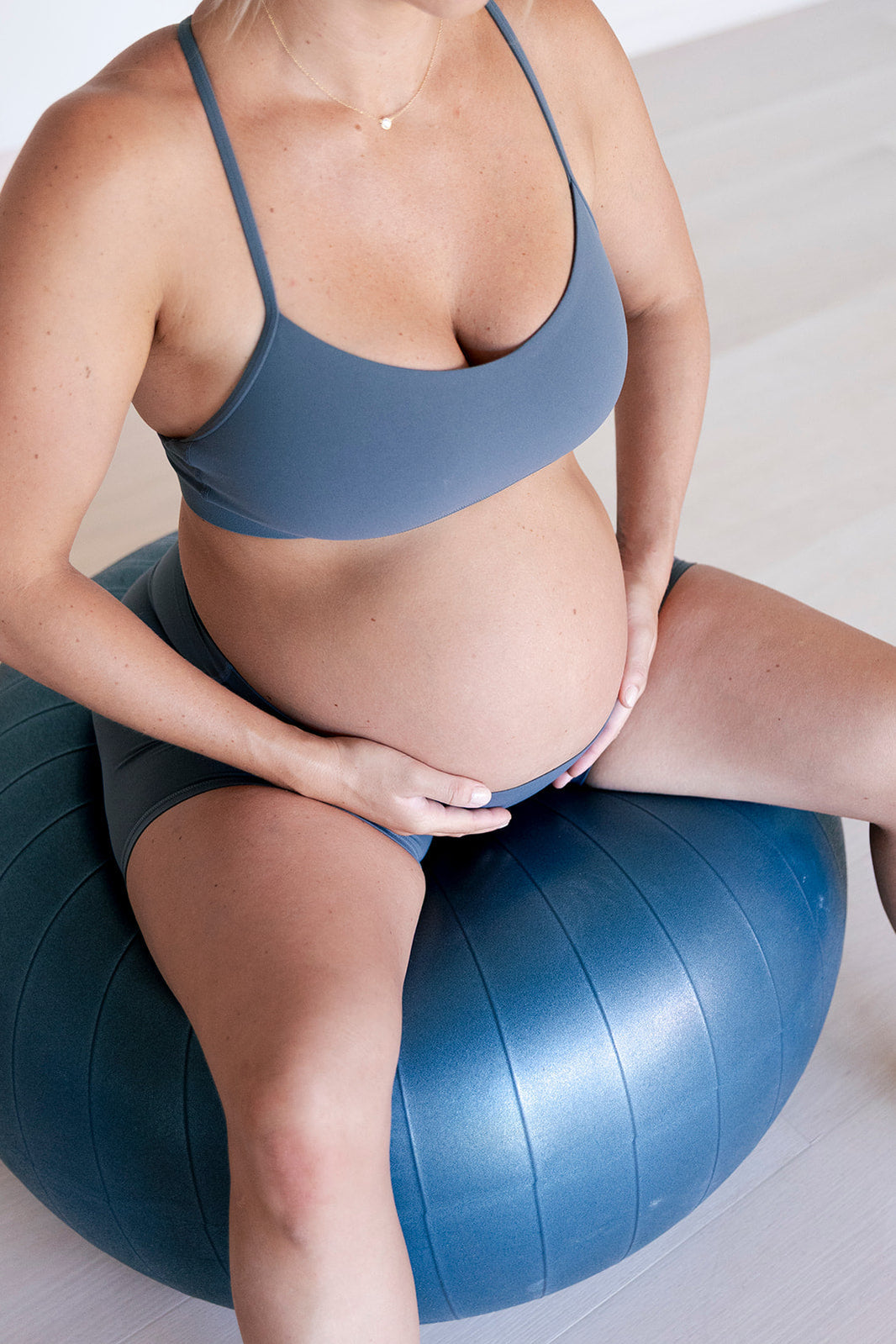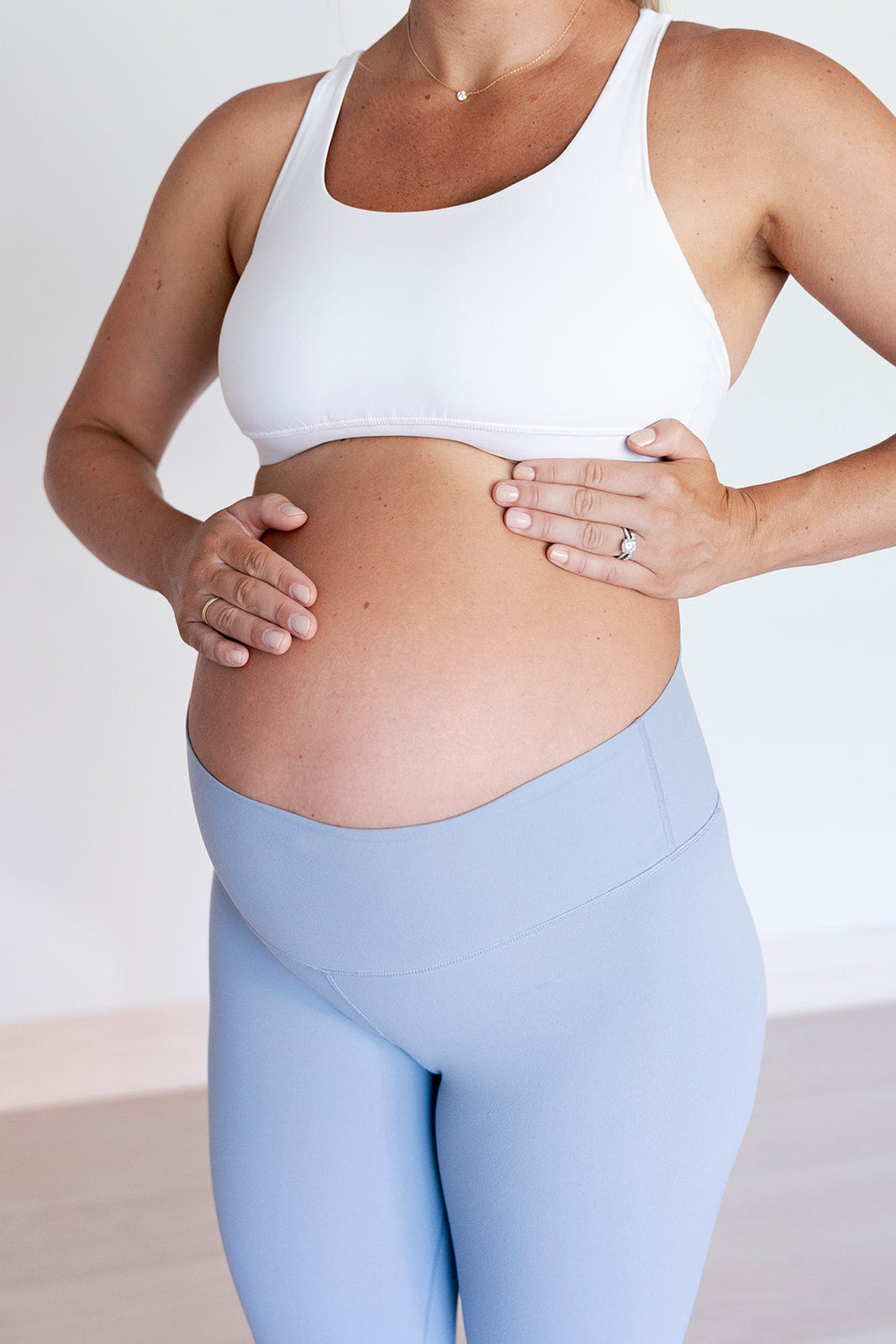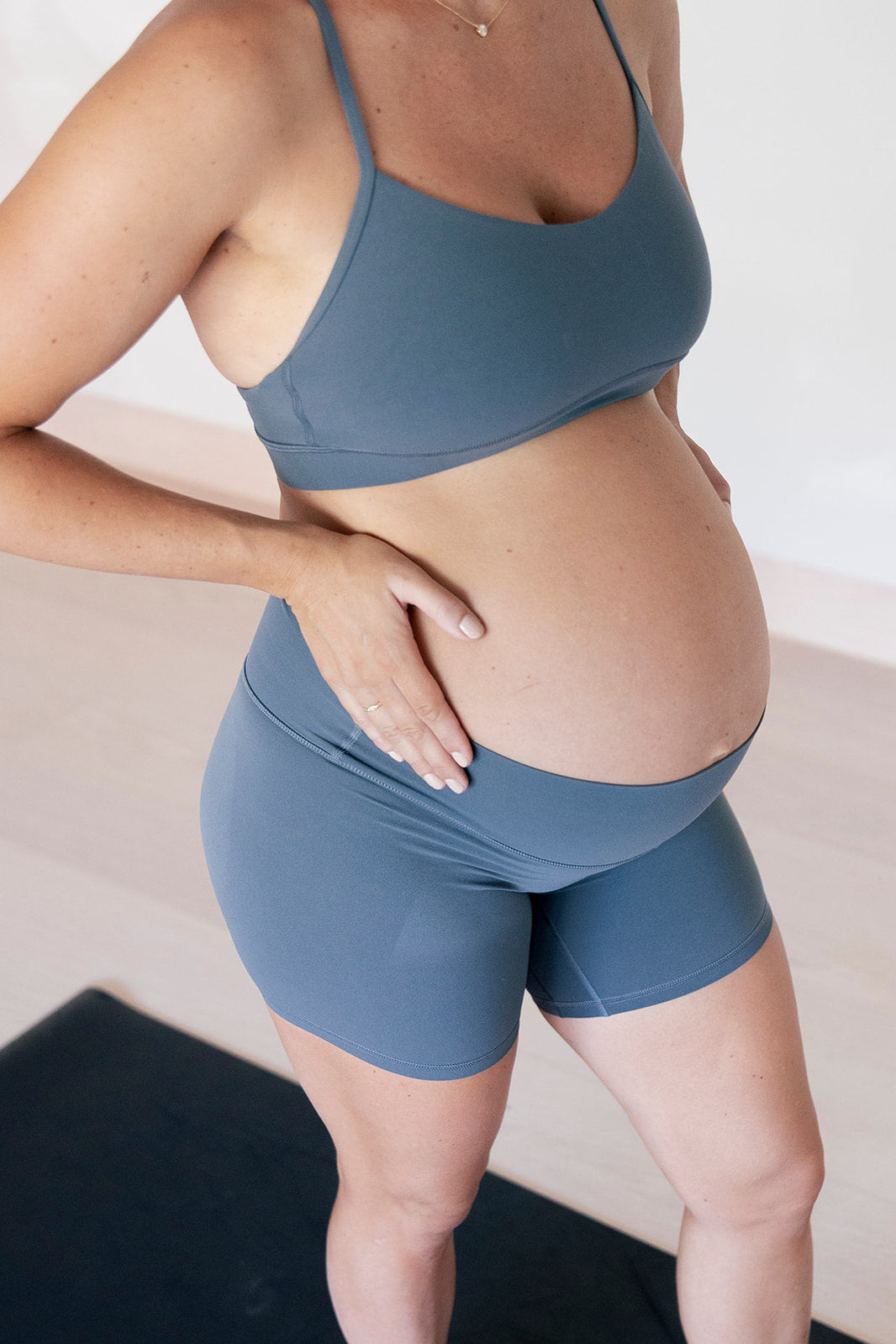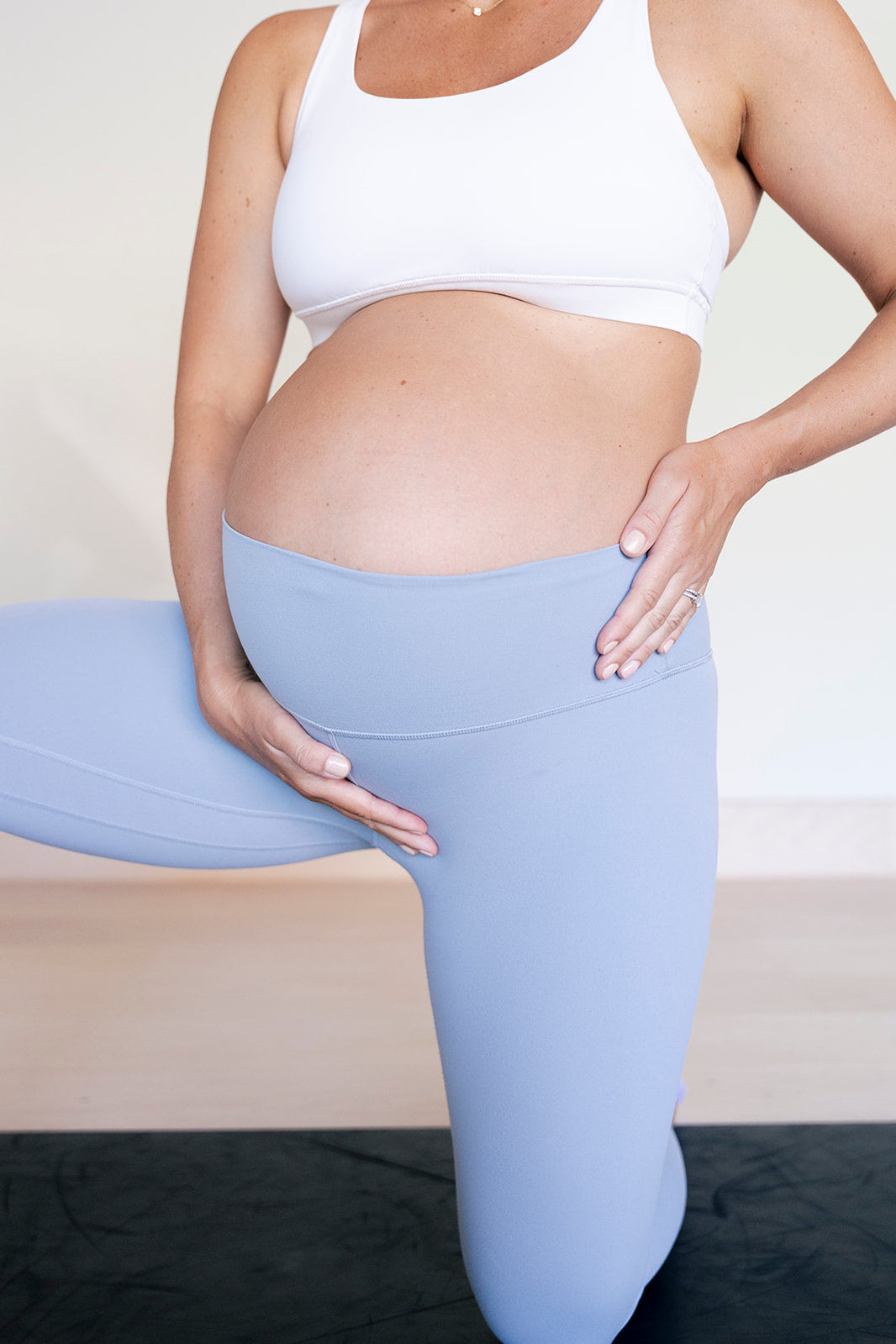Hey Mama! Let’s talk about something that doesn’t get nearly enough attention: Symphysis Pubis Dysfunction (SPD). If you’ve been experiencing pain in your pelvic area during pregnancy, you’re not alone. This condition is super common, and while it can be uncomfortable, there’s a lot you can do to feel better and keep moving confidently through your pregnancy.
Let’s dive into what SPD is, why it happens, and how you can manage it. Plus, I’ll share some of my favorite exercises to help you find relief and feel strong again.
What Is Symphysis Pubis Dysfunction (SPD)?
First things first, what exactly is SPD? The pubic symphysis is a joint located at the front of your pelvis, where your left and right pelvic bones meet. It’s made of tough cartilage and is supported by ligaments. Think of it as a shock absorber that helps distribute the weight from your upper body down through your pelvis to your legs.
During pregnancy, your body produces hormones called relaxin and estrogen, which loosens the ligaments around your joints to prepare for childbirth. While this is amazing for helping your body adapt to labor, it can sometimes lead to too much movement in the pubic symphysis. That’s when pain and discomfort can set in. But don’t worry, momma—your body is incredibly resilient, and there’s a lot you can do to support it!
What Can Make SPD More Likely?
Some mommas are more prone to SPD than others. Here are a few factors that might increase your risk:
- Family history: If your mom or sister experienced SPD, you might, too.
- Previous pregnancies: Your body has been through this before, so the ligaments may already be a bit more stretched.
- Pelvic or back injuries: If you’ve had injuries in these areas, they might make your pelvis a little more vulnerable.
- Hypermobility: If you’re naturally very flexible, your joints may already have more movement than usual.
- Lifestyle factors: Things like high stress levels, less regular exercise, or even activities like long-distance running can play a role.
Remember, momma, none of this means you’re destined to experience SPD. It just means your body might need a little extra TLC during pregnancy.
How Common Is SPD?
You’re not alone if you’re dealing with this! SPD is actually pretty common. Around 74% of first-time moms experience some level of pelvic pain during pregnancy. For some, it starts early in the first trimester, but most feel it in the second or third trimester. The good news? Once your baby arrives, the pain usually goes away as your body begins to heal.
What Does SPD Feel Like?
Mommas with SPD often describe it as a sharp, stabbing, or grinding pain in the front of the pelvis. It can make everyday activities feel challenging. Here are some common triggers:
- Putting on pants, underwear, or shoes (lifting one leg at a time)
- Walking quickly or running
- Climbing stairs
- Lunges or deep squats
- Standing on one leg
Does any of this sound familiar?
Why Does SPD Happen During Pregnancy?
Pregnancy is a time of incredible change for your body. Here’s why your pelvis might be feeling the strain:
- Weakened Core Muscles: As your baby grows, your abdominal muscles stretch and lose some of their strength. This can reduce the stability they provide to your pelvis.
- Pelvic Floor Pressure: Your pelvic floor muscles are working overtime to support your growing baby. This added pressure can make them harder to activate.
- Increased Joint Laxity: Hormones like relaxin and estrogen loosen up your ligaments, which is great for childbirth but can lead to too much movement in the pubic symphysis.
- Postural Changes: As we progress through pregnancy, we can adopt wide legged positions with more hip external rotation which can cause increased strain throughout the pelvis and its structures, especially the pubic symphysis.
How to Manage SPD: Exercises and Tips
The good news, momma, is that you have options. Strengthening your core and pelvic floor muscles and learning how to brace these muscles through movement can make a big difference in stabilizing your pelvis and easing SPD pain. Here’s how to get started:
Step 1: Learn to Pelvic Brace
The first step is learning how to properly brace your core and pelvic floor. This involves engaging these muscles together to create a strong support system for your pelvis.
First, Learn Pelvic Floor Activation: Imagine gently lifting a blueberry with your vaginal muscles or stopping the flow of urine and gas. This will help you engage your pelvic floor.
Second, Learn Deep Core Engagement: Visualize zipping up a pair of tight jeans, starting at your pubic bone and moving up to your belly button. You should feel your core muscles drawing inwards.
Combine the Two for a Pelvic Brace: Engage your pelvic floor first, then your deep core. Use an exhale to activate these muscles, and avoid holding your breath.
This bracing technique is your foundation, momma, so practice it until it feels natural.
Step 2: Progress Your Pelvic Brace
Once you’ve mastered the basic pelvic brace, you can start adding in movements that strengthen the surrounding muscles. These will help stabilize the structures around your pelvis even more.
Adductors (Inner Thighs):Activation of your inner thigh muscles can immediately create pelvic stability directly to your pubic symphysis as these muscles connect into it. Learning how to engage these muscles can help with immediately decreasing pain for a lot of mommas.
Abductors (Outer Thighs): Activating your outer hip muscles can reduce tension on the pubic symphysis by allowing for improved stability in your pelvis and less pelvic imbalances that can cause shearing at the pubic symphysis.
Lower Body Strengthening: Learning how to engage the pelvic brace with exercises that strengthen all muscles around the pelvis, ideally avoiding single leg movements are excellent for building stability.
Oblique Strengthening: The oblique muscles create a sling of stability that runs through the pubic symphysis. These muscles have a difficult time engaging during pregnancy due to the changes of the rib cage where they attack into. Having exercises that encourage their activation can create more stability through the pubic symphysis.
Step 3: Try These Exercises
Here are my favorite exercises to help manage SPD:
Seated Pelvic Brace with Oblique Activation
-
- Sit on a chair for an easier challenge or birth ball for a harder challenge. Find a neutral pelvis.
- Engage your pelvic floor and core with your pelvic brace as you exhale.
- Lightly press one palm across to the opposite thigh, engaging your obliques. Repeat on both sides for up to 20 reps.
Seated Hip Shift Reset
-
- Sit with a pillow or Pilates ball between your knees and your hands on your hips.
- Gently shift one hip behind the other then squeeze the ball/ pillow lightly while engaging your brace. Test both sides to find the most comfortable position. Repeat this 10-15 x for relief.
Bridge With Adductor Squeeze
-
- Lie on your back with a pillow or Pilates ball between your knees.
- Exhale to engage your pelvic brace, squeeze the ball/ pillow, and lift your hips into a bridge. Lower slowly and repeat 10 times.
Booty Band Sit-to-Stand
-
- Place a resistance band above your knees while sitting.
- Engage your pelvic brace and lightly press outward against the band as you exhale and stand. Lower back down and repeat 10 times.
Standing Pallof Press
-
- Stand with a resistance band anchored at belly button height, pulling from the side.
- Engage your brace and press the band straight out while exhaling , resisting its pull, and inhale to bring the band back to belly button. Perform 10-15 reps per side.
Other Tips for Managing SPD
- Use a Support Belt: A pelvic support belt can provide gentle compression around your pubic symphysis. Some great options include this one for targeted compression or this one with belly support.
- Avoid Aggravating Movements: Try to avoid wide-legged positions, stand with equal weight on both legs, and sit while putting on clothes. It’s important to not continue to aggravate the pubic symphysis if it’s already flared up.
- Use Stairs Wisely: If stairs are painful, try going up sideways or one step at a time.
- Stay Positive: This pain is temporary, and your body is doing an amazing job growing your baby.
When to Seek Help
If these tips and exercises aren’t enough, don’t hesitate to reach out to a pelvic floor physical therapist. They can create a personalized plan based off your specific limitations to help you feel better. Remember, momma, you’re not alone in this journey, and there are plenty of resources to support you.
Final Thoughts
SPD can be a challenge, but you’re strong and capable, momma. With the right tools and support, you can navigate this discomfort and stay active during your pregnancy. Remember to listen to your body, prioritize rest when you need it, and celebrate all the incredible work your body is doing. You’ve got this!
Looking for a pregnancy exercise program? Join the Momday App.
If you need more guidance on how to exercise during pregnancy you can join the Momday App, it's FREE to try for 7 days! The app has self guided and follow along workouts for each week of pregnancy as well as mobility routines, labor prep routine, education and pain relief routines to keep you feeling strong, confident and empowered throughout your pregnancy.
If you need guidance on how to return to movement and exercise in your postpartum stage, be sure to check out my 6-week Early Postpartum Recovery Program to heal your core and pelvic floor after birth and my 8-week Postpartum Strength Program to help bridge the gap between postpartum rehab and pre-pregnancy fitness.
You can also check out my YouTube Channel where have lots more FREE content for you to try including pregnancy workouts, mobility and labor prep routines.




